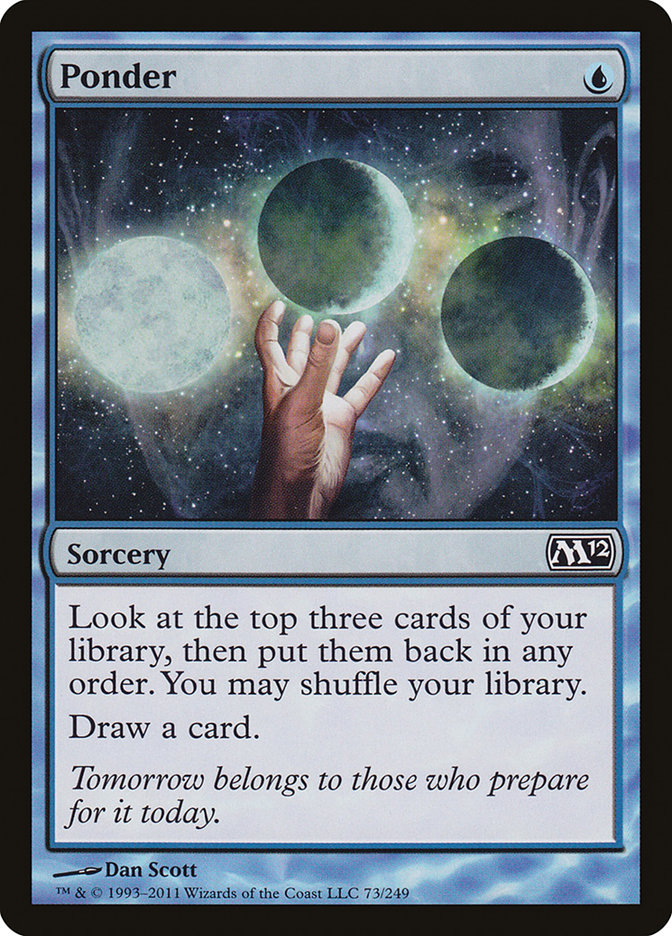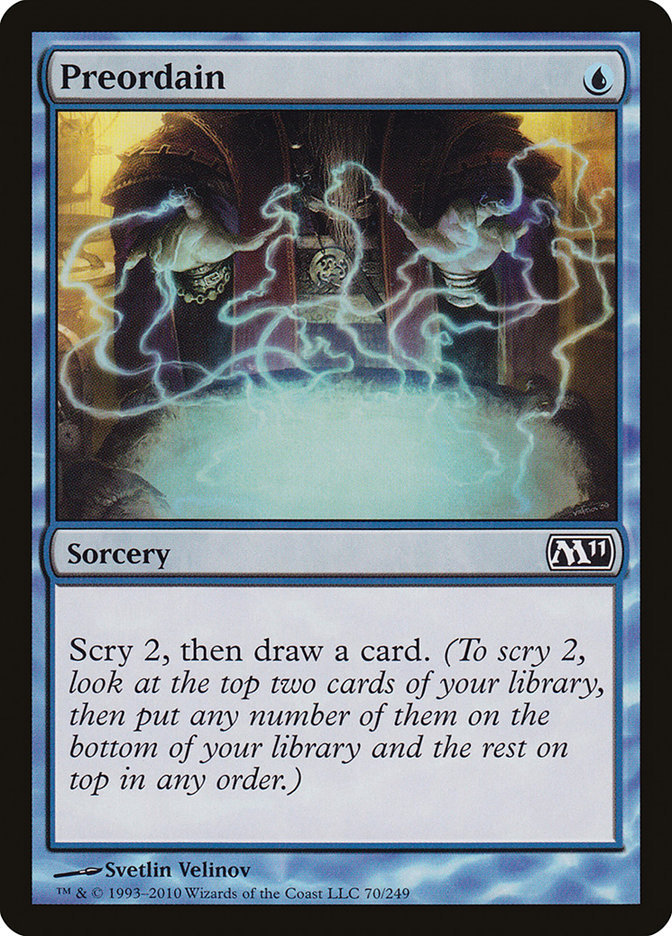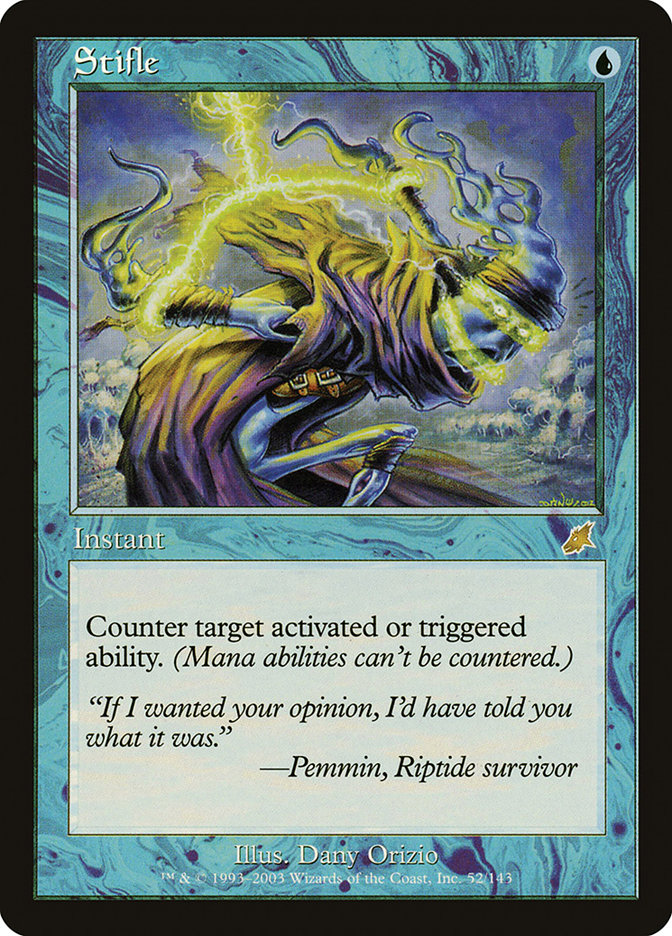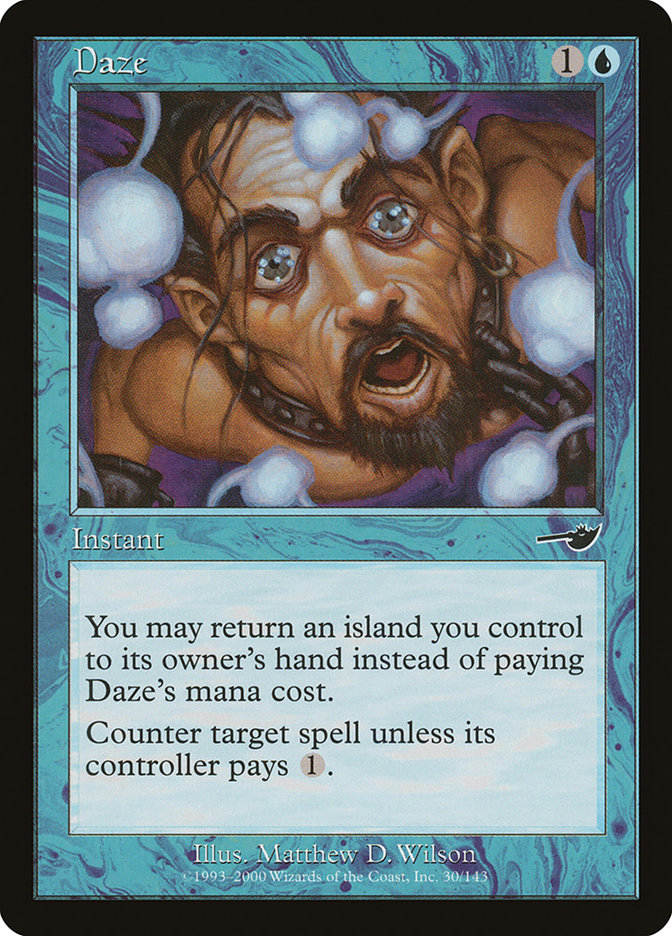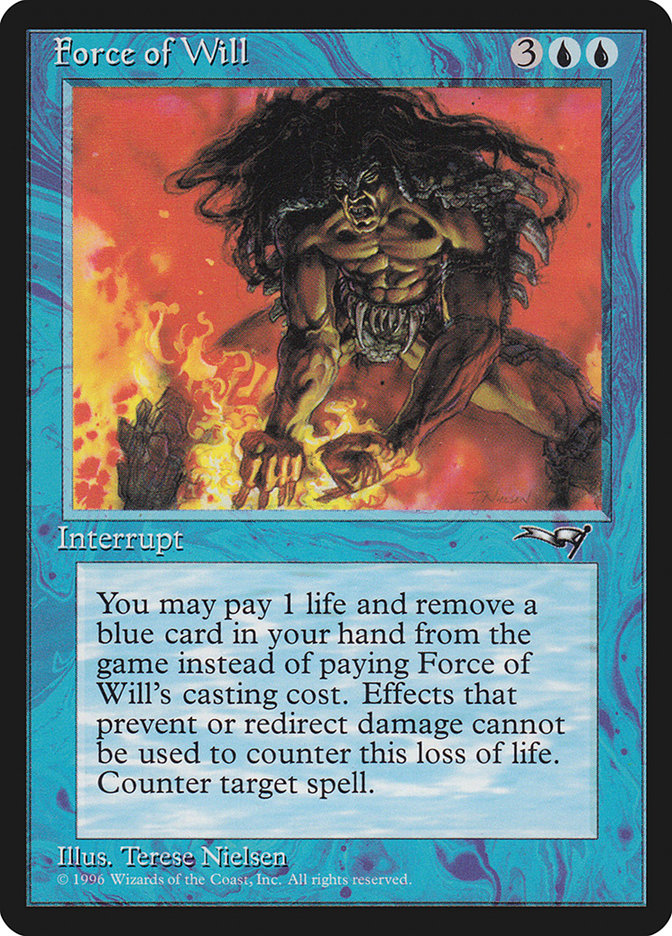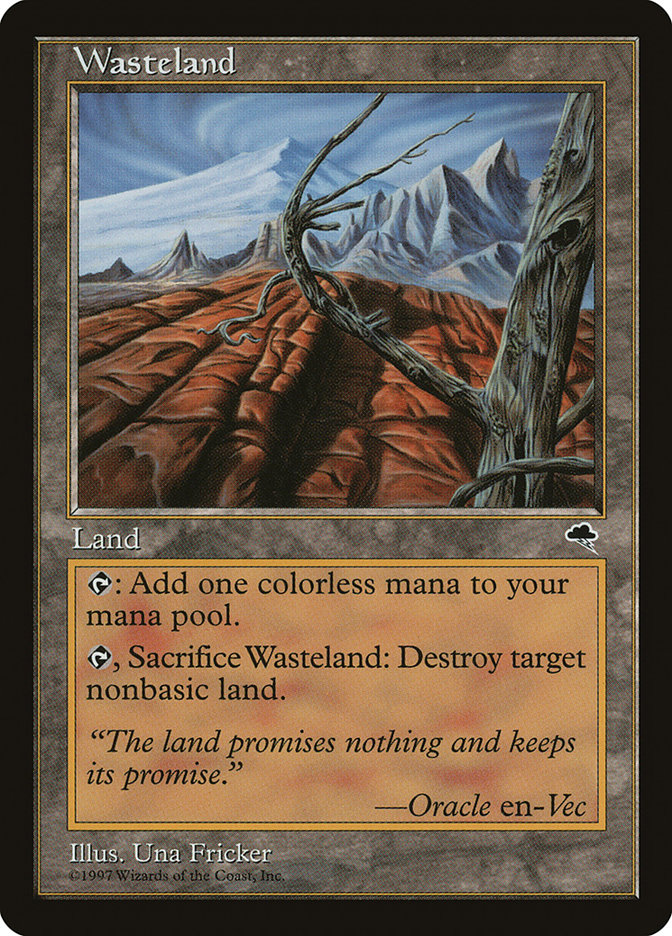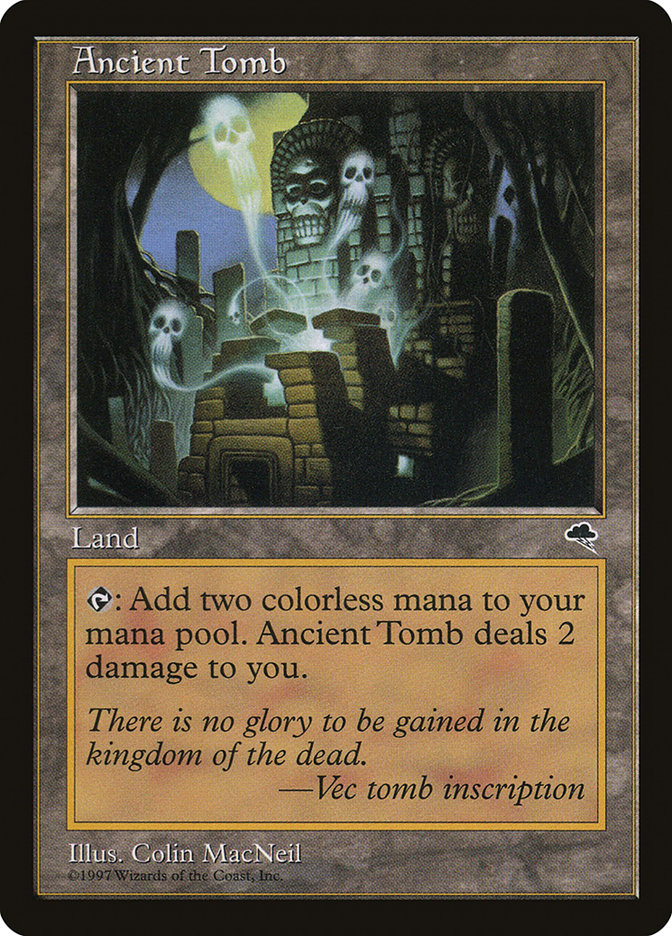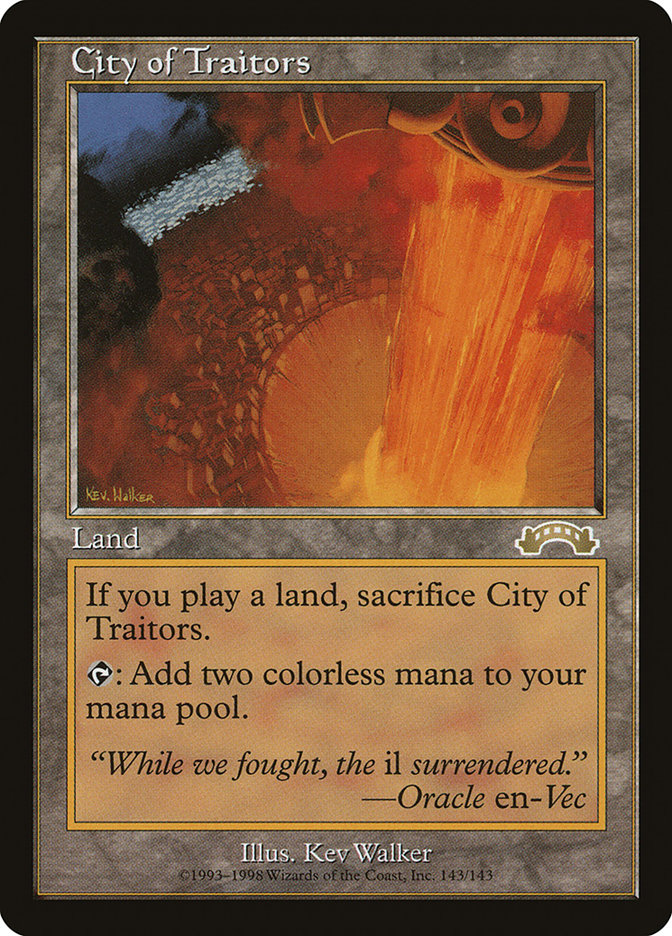Legacy is a vast format with a multitude of very different decks that see play; there can be no question about that. It is also, however, a very stable format. Many of the cards seeing play are so efficient at what they do that we’re extremely unlikely to ever see anything new printed that could replace them. As a result, we see different decks using very similar cards to implement their plans and find that those seemingly disparate archetypes actually end up playing out relatively similarly. I call these card groups that happen to work well together and that impart a particular strategic focus "shells."
What I’d like to do today is explain exactly what I mean when talking about shells by showing a few examples of the commonest shells in the format and following that up by talking about the uses and benefits of this particular way of thinking about Magic cards.
Ready? Alright, let’s get started.
Getting Shells
A shell, in the way I use the term, is a group of cards commonly played together that shape the strategic focus and tactical game of any deck they’re played in. They either strongly influence how a deck plays out or give it a particular set of synergistic options. Knowing and understanding these shells has a multitude of uses both in deckbuilding and during gameplay itself.
There are relatively few limitations as far as what might count as a shell. It’s one of those "I know it when I see it" kinds of things. What all of them share is that we’re talking about groups of cards here, not particular singletons, and that their presence strongly shapes a deck’s gameplay.
As there are so few exact details, I’ll try to clarify what I mean with the term by showing you a few common shells and talking about what using them does for a deck.
The Blue Cantrip Shell (aka the Cantrip Cartel)
My personal favorite shell has to be the cantrip cartel, as evidenced by having invented a name for this one. What I refer to here are ten or more slots in a deck being filled with Brainstorm, Ponder, Preordain, and, to a lesser extent, Gitaxian Probe. What happens when you hit the ten-cantrip threshold is that you end up casting a library manipulation cantrip just about every turn, creating a level of card quality that no other engine in Legacy can match in both speed and digging power. As a result, decks featuring the cantrip cartel have the most even draws of any deck in the format and can easily access just about any card in the deck in a reasonably short time frame.
The typical beneficiaries of this are combo decks, from Sneak and Show and Omni-Tell to Ad Nauseam Tendrils and High Tide. That makes a lot of sense because combo decks are decks that need very particular cards as soon as possible—once they get them, the game just ends. Therefore, they should employ the fastest available digging engine.
These decks resemble each other gameplay-wise too, as much as I might hate to admit it (given my love for Storm and hatred for Show and Tell). You spend the early turns of the game sculpting with the cartel, and once you’re ready you punch through a lethal threat, be it an Emrakul, the Aeons Torn; an Omniscience; or a more convoluted engine kill.
You can obviously use the Cantrip shell in non-combo decks—like my old Caw Cartel list—but the amount of space you spend on insuring your card quality limits what else your deck can do significantly. A lot of the time you’ll need a combo win just because there isn’t enough room left in the deck for answers, threats, and mana together.
The Death and Decay Shell
This newcomer has rapidly become the backbone of a ton of different fair decks ever since Return to Ravnica was released. What we have here is a base black removal and disruption package that delivers a lot of raw power while covering a lot of different bases as far as interactivity is concerned. Just this shell alone not only gives you mana acceleration, extremely flexible removal for almost any threat you’re likely to face, and the ability to interact just about anywhere with discard and graveyard hate but also a lot of raw power in the long game with raw card advantage and Deathrite Shaman’s ability to turn used cards into faux Drain Lifes.
Given these strengths, it shouldn’t be surprising that this shell has been integrated into and given rise to a large number of strategies. I think the Legacy community even now hasn’t finished exploring the potential of this new shell.
The Tempo Shell
From the latest newcomer to one of the oldest shells still viable in the format, the Tempo shell is at the heart of decks like RUG Delver and BUG Delver but has seen play in a myriad of other decks. By running a combination of free countermagic, highly efficient mana denial, and cheap library manipulation, any deck sporting this shell gets access to a lot of consistency as well as an incredible amount of powerful early game interaction. These cards together allow a deck to rely on a low land count while stifling the opponent’s early game development to pull ahead to a point where coming back is just impossible.
Stifle and Wasteland alone lead to a relevant number of free wins by leaving the opponent without mana to play the game, and the mana denial combined with cheap countermagic will lock up many other games when the opponent is scrambling to recover from the early assault on their resources while your cheap cantrips find exactly what’s needed to keep them trapped for long enough to reach the game’s end.
The Chalice Shell
This is one of the most powerful yet also least consistent shells in the format. When I saw Caleb Durward’s original Tezzeret list, I was incredibly surprised to see only a single Chalice of the Void in the deck—in part because I’m so used to thinking in shells. Chalice of the Void on one on the first turn is such a powerful play that it will often end up winning the game by its lonesome, and the Sol lands are the easiest way to make that happen. As such, it seemed incredibly weird for Caleb to have a deck perfectly set up to use the Chalice shell yet ignoring that pivotal card.
The big problem with this shell—and why it’s seen comparatively rarely—is that its power comes with a price. Locking out all one-drops on a consistent basis forces you to forgo as many one-mana plays as possible, leading to Chalice decks having much higher variance than normal Legacy decks. Whenever you don’t draw a Sol land, you won’t have a turn 1 play. You’ll be losing City of Traitors during the game, and Ancient Tomb will become more and more costly to use. In short, you trade consistency for raw power just by using the Chalice shell.
Alright, that list is obviously far from complete, but I hope it helped clarify what I’m trying to say. In theory, you could consider any specific deck a shell, though that takes the concept too far to still be useful. Instead, we need to look for batches of cards that form a coherent entity across more than one deck. Essentially, shells are like decks in a can; they just happen to be small enough packages to be integrated into larger complete decks.
Defining that kind of thing is all nice and dandy, but what is this thought process good for?
Building With Shells
Let’s answer this one step by step. As far as deckbuilding is concerned, shells make finding homes for new cards easy and allow us to find the likely best answer to a lot of different questions. Found a new combo? Well, you probably want to try slotting it in around the cantrip cartel. Need something to give you early game interaction and a way to end up ahead on the board after the first few turns? Go, go Tempo shell.
Essentially, what thinking in shells does for us is allow us to rapidly assemble early builds of anything new we’d like to explore. Take your new idea, put it in a powerful existing shell, fill it up with a few other cards in the appropriate colors—remember your slot-based deckbuilding—and voila, a first-draft deck is born.
As another example, look at the Miracles deck. One would expect that it would take time to build something powerful to use such a new and different mechanic, right? Well, I had the basic way the deck still looks today down roughly a week after Terminus was spoiled. How? Well, I took the Counterbalance shell (not mentioned above, basically Force of Will; Sensei’s Divining Top; Brainstorm; Counterbalance; and Jace the Mind Sculptor) because it had a bunch of natural synergy with miracles, added the miracles, rounded things out with a couple of other staples—and that was it. Sure, a little tuning and tinkering remained, but the deck still looks extremely similar to those first drafts of mine.
In the same vein, shells allow us to easily port strengths from one deck to another. You have a good deck but could use some mana acceleration and more grinding power? Well, slot in Death and Decay and after a little bit of tuning you should be set. You can even build totally new decks by merging different powerful shells. Just look at Esper Deathblade for a current example (Death and Decay added to the Stoneforge shell of Stoneforge Mystic Batterskull; Umezawa’s Jitte; and Jace, the Mind Sculptor).
In addition, you can use shells to explore the same style of deck in different color combinations. A few years ago, we had Canadian Threshold, Team America, and New Horizons all as distinct decks in the top tier of the format. Effectively, though, they were all the same deck. All three relied on the Tempo shell and combined it with cheap high-power creatures to put on a lot of early game pressure, but each had slightly different strengths and weaknesses because they decided to use different third colors (red, black and white, respectively) to try to capitalize on the early game disruption the Tempo shell provided.
Shells In Game
This latter observation also yields a first impression of why knowing the common shells is extremely useful when sitting down at the table. Your opponent Stifles your first fetchland. You may not know what exactly they have in their deck, but the second this happens you can almost be certain they’re also running Daze, Brainstorm, Ponder, and Force of Will—seeing a single spell essentially revealed a third of their deck and allows you to play around those cards without ever having seen them.
Not only that but you also know that they’re going to try to constrict your resources so that a couple of threats can take the game once you’re out of options. Just by seeing that single card you instantly know how to sculpt your play and what weak and strong points your opponent’s deck likely has.
Similarly, imagine your opponent mulligans to five, plays Bayou into Deathrite Shaman, and never draws another land or plays another spell. Theoretically, they could be playing anything, and you’d have no idea what to prepare for during sideboarding. I can already hear you saying, "What? I know I need to watch out for discard and removal and that they’re playing a long-game deck!" That’s kind of my point though. Think about it. How do you know all that? Can you pinpoint the actual archetype they’re on? Did they show you any discard or play any late-game cards? No, they didn’t. You know what the Death and Decay shell looks like, that’s how you know!
Because of this, knowing which common shells exist in a format might actually be more useful for a player new to a format than trying to memorize all the top decks, especially given Legacy players’ propensity to brew.
When your opponent opens Island, go twice in a row and then Stifles your fetchland, you might not know what they’re playing, but you can be reasonably sure you should not run your spells into Daze if you can avoid it and should expect your lands to die to Wasteland at some point. If your opponent plays turn 1 Deathrite Shaman, you know most of their disruption is going to be discard based. If they cast a Preordain on turn 1, you know they’re likely playing combo and will use a lot of library manipulation. And so on and so forth. Knowing about shells allows us to make better decisions with minimum information even against rare decks or brews because it turns minor tells into revealing actions.
Shell Shocked
Well, that’s shells in a nutshell. As a convenient tool to group deck-defining card combinations, the idea of specific shells allows us to easily build new decks and explore different variants of similar strategies in a much easier way than having to search for good ways to do something again and again. They allow us to extract maximum information from every play our opponents make and to identify large swaths of cards they’re likely running without ever seeing them. In short, thinking about shells makes life easier when playing Magic.
That’s it for today; let me know what you think and feel free to share your favorite Legacy shells in the comments. Until next time, listen to the sea!


